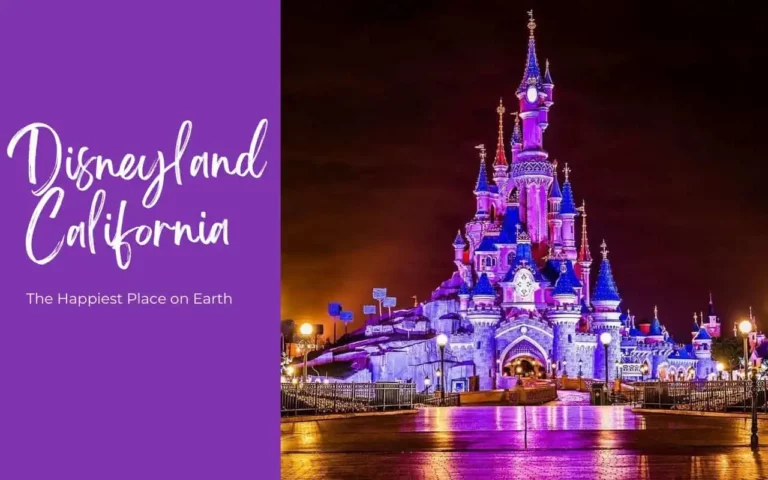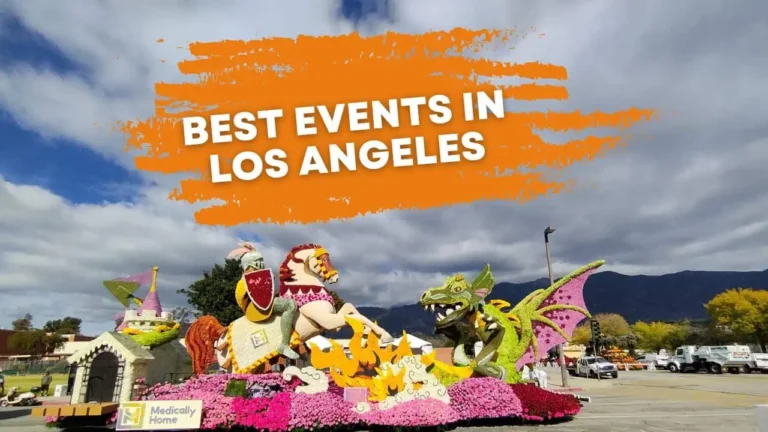15 Best Things to Do in Death Valley National Park – Map, Top Attractions, Activities and Scenic Route
Are you planning a trip to Death Valley National Park and wondering what to do there? You’ve come to the right place! Death Valley is one of the most unique and diverse national parks in the United States, with something to offer everyone. In this article, we’ll explore some of the best things to do in Death Valley National Park including the Death Valley Scenic Route Map, Zabriskie Point, Mesquite Flat Sand Dunes, Drive Through Titus Canyon and much more so that you can make the most out of your visit.
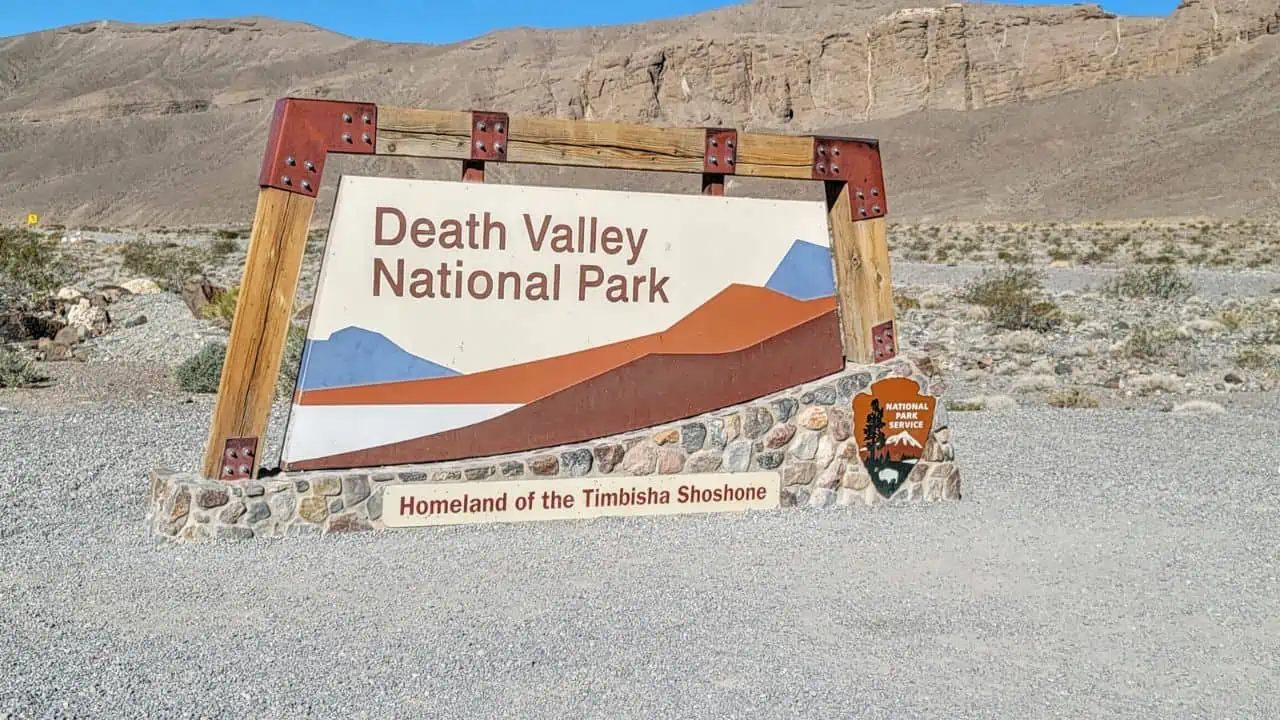
List of Best Things to Do in Death Valley National Park
| Activity | Key Information |
|---|---|
| Visit Badwater Basin | Lowest point in North America, unique salt formations |
| Explore Artist’s Palette | Colorful rock formations, scenic drive |
| Hike in Golden Canyon | Beautiful scenery, moderate difficulty |
| Drive through Titus Canyon | Scenic drive, historic sites |
| See Mesquite Flat Sand Dunes | Stunning desert landscape, popular photography spot |
| Visit Ubehebe Crater | Impressive volcanic crater, hiking opportunities |
| Experience Zabriskie Point | Scenic viewpoint, stunning sunrises and sunsets |
| Tour the Borax Museum | History of mining in Death Valley, artifacts and exhibits |
| Take a Dip in the Hot Springs | Natural hot springs, relaxing experience |
| Visit Scotty’s Castle | Historic mansion, guided tours available |
| Go on a Scenic Drive | Dante’s View Drive, Twenty Mule Team Canyon, Wildrose Road |
| Hike to Telescope Peak | Highest point in Death Valley, challenging hike |
| See the Racetrack Playa | Mysterious moving rocks, only accessible by rough dirt road |
| Visit the Death Valley Visitor Center | Information about the park’s history and geology, safety tips |
| See the Wildflowers in Spring | The best time to see the wildflowers is usually between February and April, depending on the weather. |
Death Valley National Park Key Facts
| Fact | Information |
|---|---|
| Name | Death Valley National Park |
| Location | California and Nevada, United States |
| Size | 3.4 million acres (13,650 square kilometers) |
| Established | February 11, 1933 |
| Annual visitors | Over 1 million |
| Climate | Hot and dry, with temperatures up to 134°F (56.7°C) |
| Topography | Lowest point in North America (282 feet/86 meters below sea level), highest point (Telescope Peak) is 11,049 feet (3,368 meters) above sea level |
| Geology | Rich in geological features such as canyons, sand dunes, badlands, and volcanic craters |
| Flora and fauna | Home to over 1,000 plant species, 51 species of mammals, and 307 species of birds |
| Human history | Inhabited by Native Americans for thousands of years, later settled by miners and ranchers in the late 1800s |
| Attractions | Badwater Basin, Artist’s Palette, Mesquite Flat Sand Dunes, Ubehebe Crater, Zabriskie Point, and many others |
| Activities | Hiking, scenic drives, camping, stargazing, photography, and more |
| Visitor centers and museums | Furnace Creek Visitor Center, Death Valley Natural History Association Museum, and Borax Museum |
Consider reading: 15 Unique Things to Do in Yosemite National Park
Why is it called the Death Valley National Park?
Many people wonder why Death Valley National Park has such a morbid name. The name “Death Valley” was given to the area by pioneers and gold rush settlers in the mid-1800s.
The harsh desert environment, with its scorching temperatures, lack of water, and rugged terrain, made it a difficult and dangerous place to traverse.
Many people lost their lives trying to cross the valley, and the name “Death Valley” stuck. However, despite its ominous name, Death Valley is a stunning and unique landscape, with a rich history and fascinating natural features.
The park offers a variety of activities and experiences for visitors, from hiking and camping to stargazing and exploring historic sites.
So, don’t let the name fool you – Death Valley National Park is a must-see destination for anyone interested in the wonders of the natural world.
Consider reading: Best Things to Do in Red Rock Canyon
1. Visit Badwater Basin
If you’re planning a trip to Death Valley National Park then one of the best Things to Do in Death Valley National Park is to visit Badwater Basin.
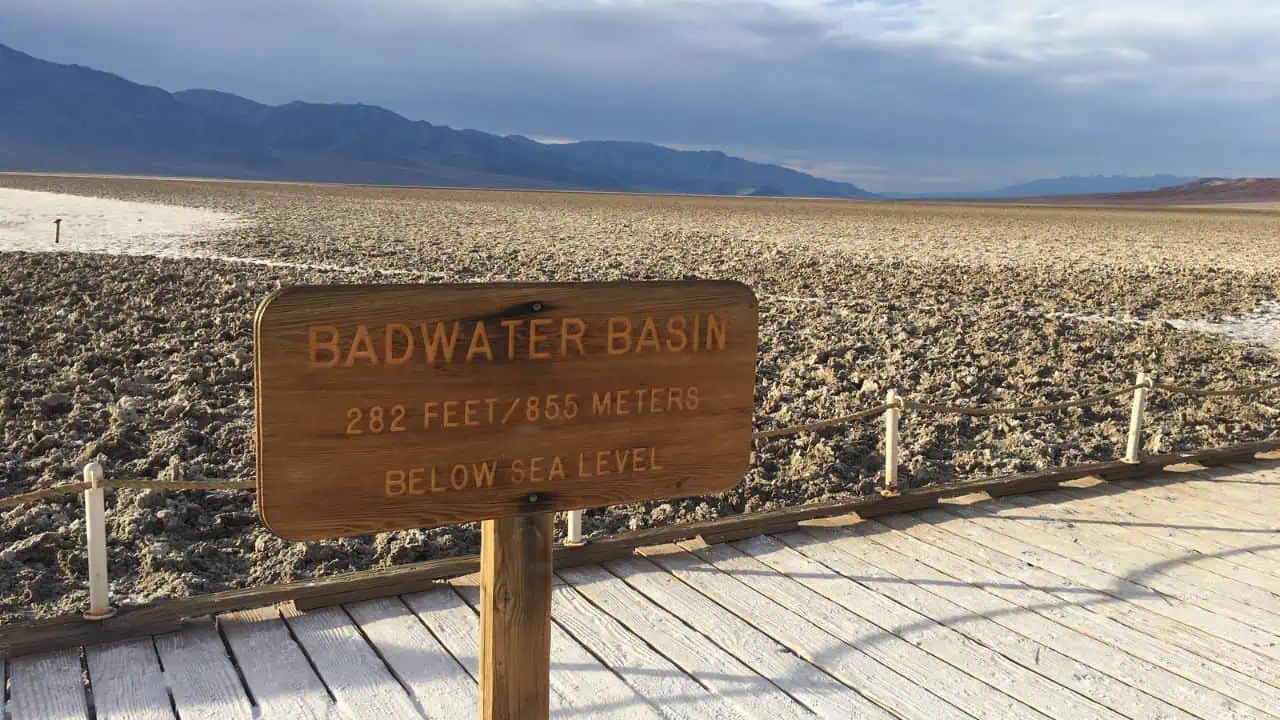
This unique spot is the lowest point in North America, sitting at 282 feet below sea level. The basin is a vast expanse of salt flats that shimmer in the sunlight, creating an otherworldly landscape that is truly awe-inspiring.
You can walk out onto the salt flats and explore the unique formations, including the “paved” salt polygons that cover the basin floor.
Badwater Basin is easily accessible by car and is a must-see destination for anyone visiting Death Valley National Park.
2. Explore Artist’s Drive
If you’re looking for a scenic drive in Death Valley National Park, be sure to explore Artist’s Drive.
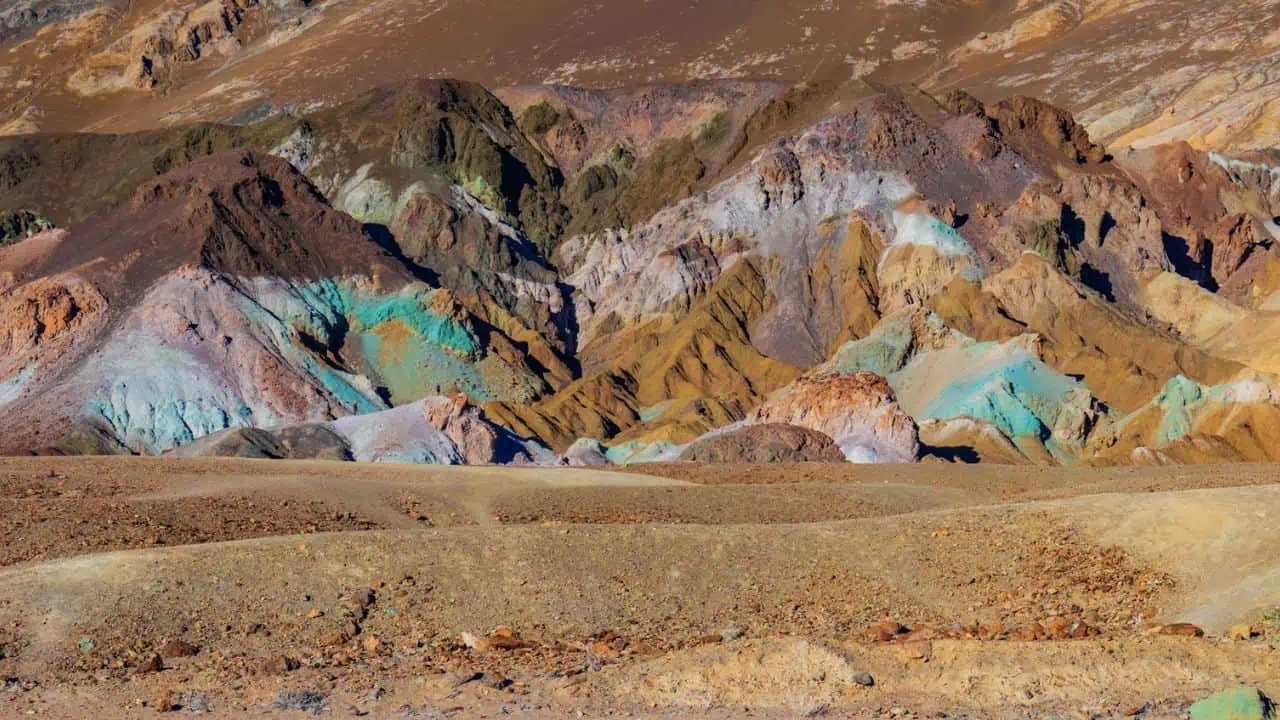
This 9-mile one-way road winds through a colorful canyon, showcasing stunning views of the surrounding landscape. The drive takes you past unique rock formations in shades of red, pink, and green, created by volcanic activity and mineral deposits.
One of the highlights of the drive is Artist’s Palette, a section of the canyon where the rock formations are particularly vibrant and colorful. Be sure to stop and take in the breathtaking views, and snap some photos to capture the moment.
Artist’s Drive is easily accessible by car and is a must-see destination for anyone visiting Death Valley National Park. So, add it to your itinerary and experience the wonder of this natural wonder.
Why is it called Artist’s Drive?: The name “Artist’s Drive” is thought to have originated from the palette of colours visible on the hillsides, which resemble those used by artists. The colours are caused by the oxidation of various minerals in the rocks, including iron and manganese.
3. Hike to Zabriskie Point
For an unforgettable hiking experience in Death Valley National Park, lace up your boots and head to Zabriskie Point.
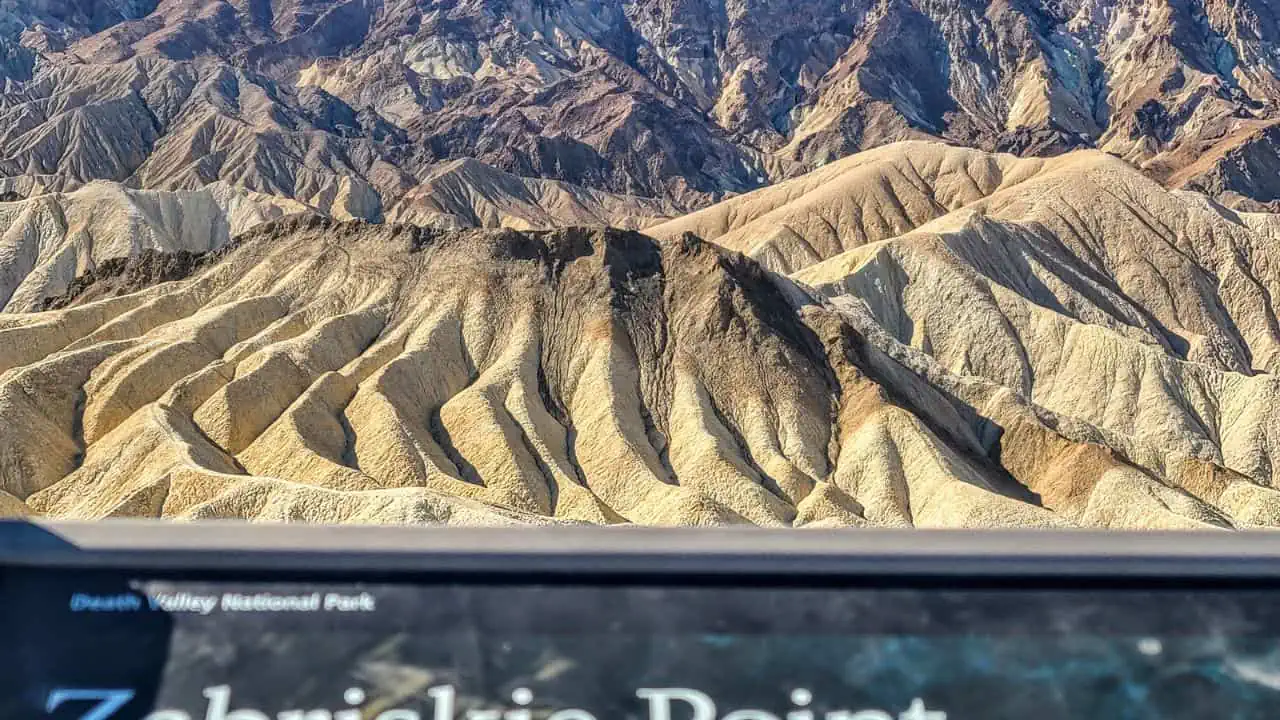
This popular destination offers stunning views of the surrounding badlands, with colorful rock formations and unique geological features. The hike to Zabriskie Point is a moderate 1.5-mile round trip, with a gradual incline that takes you up to the viewpoint.
Along the way, you’ll pass through beautiful desert landscapes and unique rock formations, making the hike as enjoyable as the destination. Once you reach the viewpoint, take a moment to soak in the breathtaking views and snap some photos to remember the moment.
Zabriskie Point is easily accessible by car and is a must-see destination for anyone visiting Death Valley National Park.
4. Check Out the Mesquite Flat Sand Dunes
If you’re planning a trip to Death Valley National Park, be sure to check out the Mesquite Flat Sand Dunes.
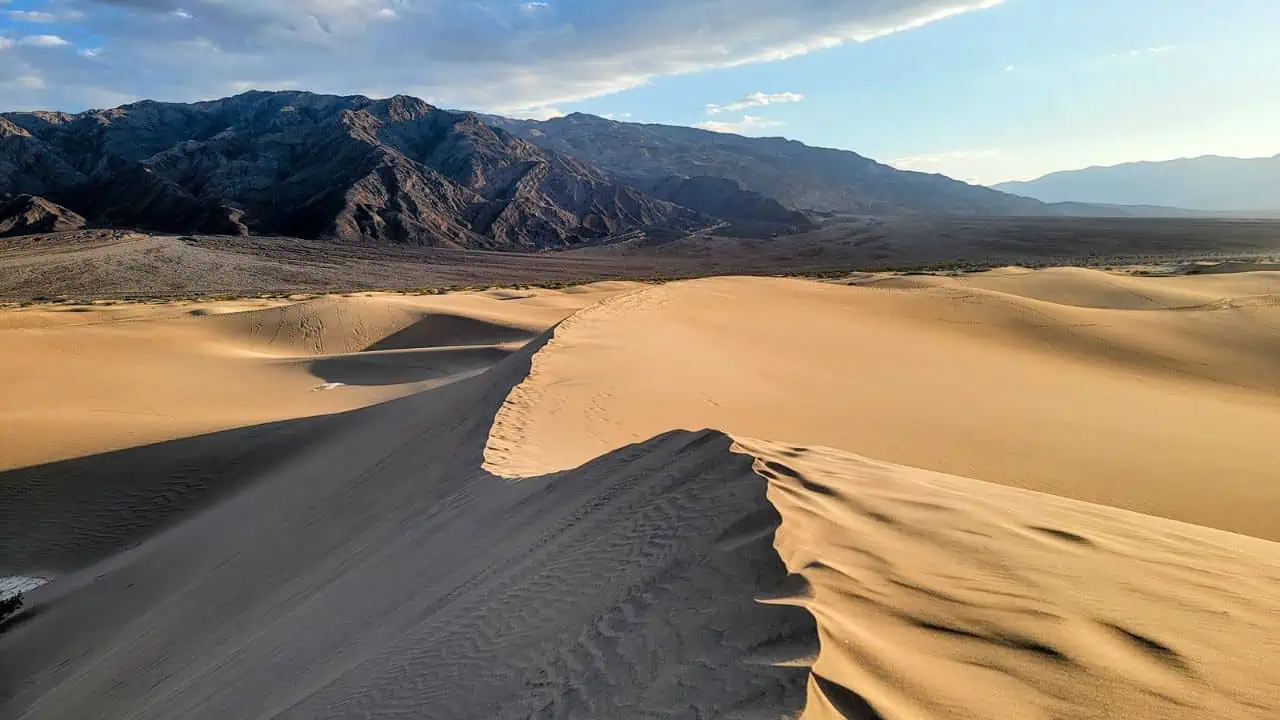
These stunning sand dunes are a unique and beautiful destination, with towering dunes that stretch as far as the eye can see. The dunes are a popular spot for photographers, hikers, and nature lovers, and offer a unique opportunity to experience the beauty of the desert landscape.
Visitors can hike out onto the dunes and explore the unique formations, or simply take in the stunning views from a distance.
The Mesquite Flat Sand Dunes are easily accessible by car and are a must-see destination for anyone visiting Death Valley National Park.
5. Drive Through Titus Canyon
If you’re looking for a scenic drive in Death Valley National Park, be sure to check out Titus Canyon.
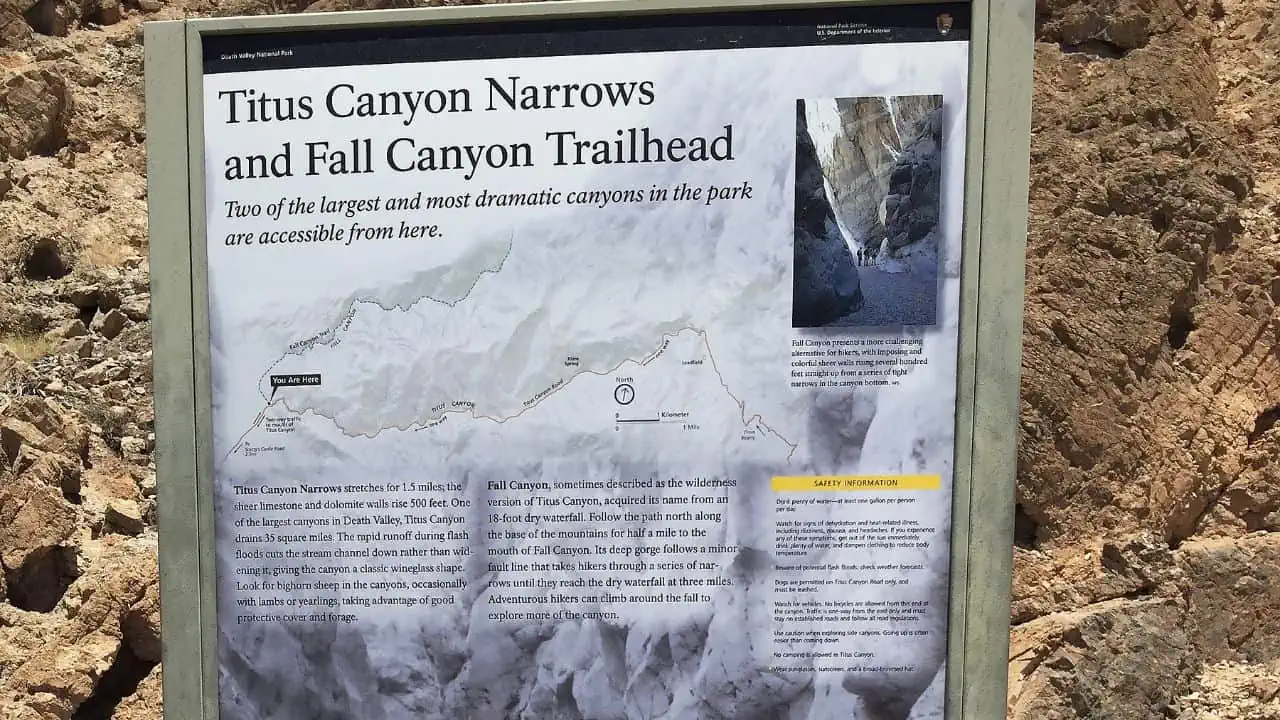
This one-way dirt road winds through a beautiful canyon, offering stunning views of the surrounding landscape. Along the way, you’ll pass through unique rock formations, towering cliffs, and stunning desert landscapes.
One of the highlights of the drive is the ghost town of Leadfield, a former mining town that was abandoned in the 1920s.
Be sure to stop and explore the town’s remains, and imagine what life was like for the miners who once called this place home. The drive through Titus Canyon is a thrilling adventure, with narrow passages and steep drop-offs that add to the excitement.
Titus Canyon is a must-see destination for anyone visiting Death Valley National Park. So, add it to your itinerary and experience the wonder of this natural wonder.
6. Visit the Ubehebe Crater
If you’re looking for a unique and awe-inspiring destination in Death Valley National Park, be sure to visit the Ubehebe Crater.
This massive crater was formed by a volcanic eruption thousands of years ago, and offers a fascinating look at the power of nature. The crater is over half a mile wide and nearly 800 feet deep, with a rough and rocky terrain that is unlike anything else in the park.
Visitors can hike around the rim of the crater and take in the stunning views of the surrounding landscape, or explore the crater itself and imagine what it must have been like during the eruption.
The Ubehebe Crater is easily accessible by car and is a must-see destination for anyone visiting Death Valley National Park.
7. See the Wildflowers in Spring
If you’re planning a trip to California, be sure to visit during the spring months to witness the breathtaking wildflower blooms.
From late February to early June, California’s hills and valleys burst with vibrant colors, as wildflowers bloom across the landscape. Some of the most popular spots for wildflower viewing include Antelope Valley, Anza-Borrego Desert State Park, and the California Poppy Reserve.
You can explore the fields of wildflowers on foot or by car, taking in the stunning views and enjoying the fresh air.
Be sure to bring a camera to capture the beauty of the blooms, and be respectful of the fragile ecosystem by staying on designated trails and not picking the flowers. Springtime in California is a magical time, and the wildflower displays are a must-see destination for anyone visiting the state.
8. Explore the Harmony Borax Works
If you’re interested in learning about the history of Death Valley National Park, be sure to explore the Harmony Borax Works.
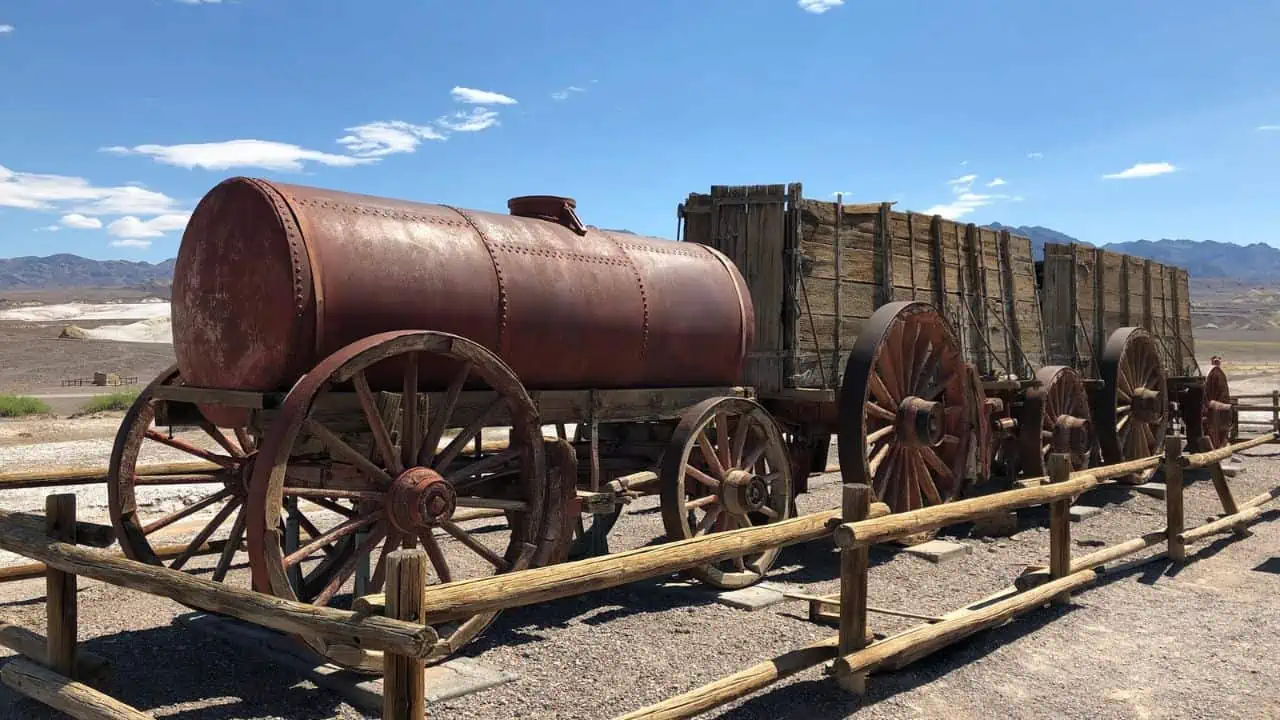
This historic site was once a bustling borax mining operation, and played a key role in the development of Death Valley in the late 1800s.
You can explore the remains of the mining machinery and buildings, and learn about the process of extracting borax from the desert landscape.
The site also offers stunning views of the surrounding badlands, making it a great destination for photographers and nature lovers.
The Harmony Borax Works is easily accessible by car and is a must-see destination for anyone interested in the history of Death Valley National Park.
9. Take a Dip in the Hot Springs
If you’re looking for a unique and relaxing experience in California, be sure to take a dip in one of the state’s many hot springs.
These natural mineral pools offer a variety of health benefits, from soothing sore muscles to promoting relaxation and reducing stress.
Some popular hot springs destinations in California include Mono Hot Springs, Sycamore Mineral Springs Resort, and Deep Creek Hot Springs.
You can soak in the warm waters and take in the stunning views of the surrounding landscape, enjoying the peacefulness and serenity of the experience.
Taking a dip in a hot spring is a unique and rejuvenating experience that should be on every traveler’s bucket list.
10. Go Stargazing
If you’re looking for an unforgettable stargazing experience, look no further than Death Valley National Park.
The park is renowned for its clear skies and lack of light pollution, making it one of the best places in the world for stargazing. Visitors can marvel at the Milky Way and countless stars, planets, and constellations that are visible to the naked eye.
The park offers a variety of stargazing programs and events throughout the year, including moonlit hikes, astronomy talks, and telescope viewing parties.
Be sure to bring warm clothing, as temperatures can drop significantly at night, and a red light flashlight to preserve your night vision.
Stargazing is a unique and awe-inspiring experience that should be on every traveler’s bucket list. So, add it to your itinerary and experience the wonder of the night sky in Death Valley National Park.
11. Visit the Scotty’s Castle
If you’re interested in history and architecture, be sure to visit Scotty’s Castle during your trip to Death Valley National Park.
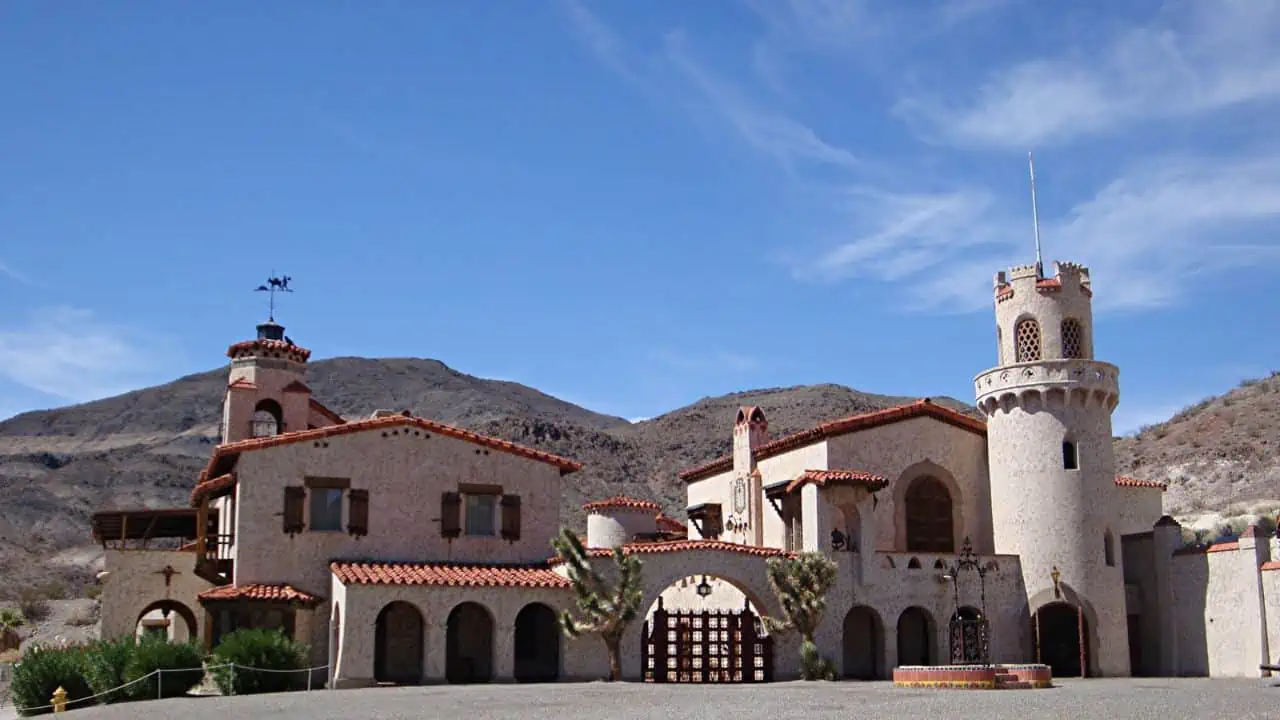
This stunning Spanish-style mansion was built in the 1920s and 1930s and is a unique and fascinating destination. Visitors can take guided tours of the castle and learn about the fascinating history of its eccentric former owner, Walter Scott, and the construction of the mansion.
The castle features beautiful gardens, water features, and stunning views of the surrounding landscape, making it a great destination for photographers and nature lovers.
Scotty’s Castle is easily accessible by car and is a must-see destination for anyone interested in history and architecture.
12. Go on a Scenic Drive
The Scenic drive from Las Vegas to Death Valley is one of the best things to do in Death Valley National Park.
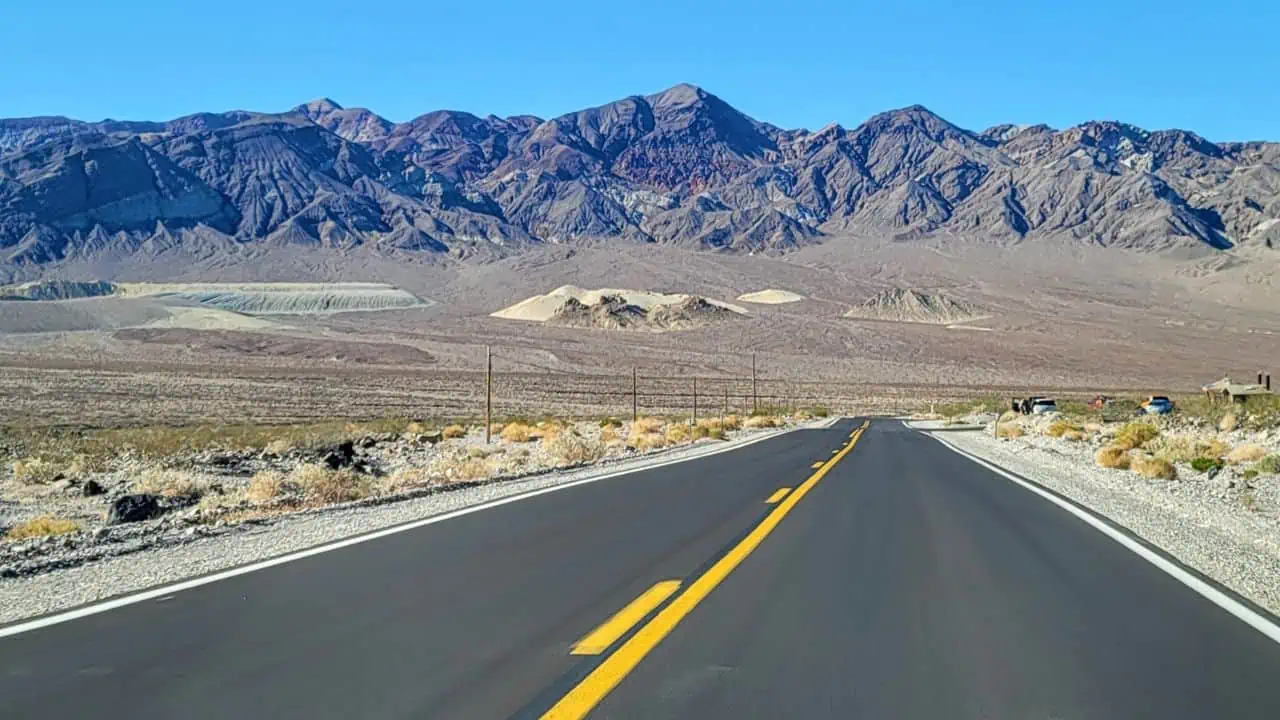
The park offers a variety of stunning drives that showcase the unique and beautiful landscape of the desert.
Some popular routes include the Badwater Road, which takes you to the lowest point in North America, and the Artists Drive, which winds through a colorful canyon.
Visitors can also explore the park’s backcountry roads, which offer stunning views of the surrounding mountains and valleys.
Las Vegas to Death Valley Scenic Route Details
Distance:172 miles
Time: 3.5 hours
| Route details |
|---|
| 1. From Interstate 15 South, EXIT on NV Hwy 160 West |
| 2. Drive 45 miles. TURN LEFT on Tecopa Road (Old Spanish Trail). |
| 3. Drive 41 miles. TURN RIGHT on CA Hwy 127. |
| 4. Drive 10 miles. TURN LEFT on CA Hwy 178 West (Badwater Road) |
| 5. Drive 75 miles. TURN LEFT on CA Hwy 190. |
| 6. Drive one mile to Furnace Creek Visitor Center. |
A scenic drive through Death Valley National Park is a must-do activity for any traveler to California, offering a unique and unforgettable perspective on this stunning landscape.
Consider reading: 15 Best Things to Do in Las Vegas during the Day
13. Hike to Telescope Peak
For a challenging and rewarding hiking experience, be sure to tackle Telescope Peak during your visit to Death Valley National Park.
This stunning peak is the highest point in the park, standing at an elevation of 11,049 feet. The hike to the summit is a strenuous 14-mile round trip, with steep inclines and rocky terrain.
Along the way, hikers will be treated to breathtaking views of the surrounding mountains and valleys, including the Badwater Basin, the lowest point in North America.
Once at the summit, hikers can take in the stunning panoramic views and snap some photos to remember the moment.
Hiking to Telescope Peak is a challenging but unforgettable experience that should be on every adventurer’s bucket list.
14. See the Racetrack Playa
One of the most mysterious and fascinating destinations in Death Valley National Park is the Racetrack Playa.
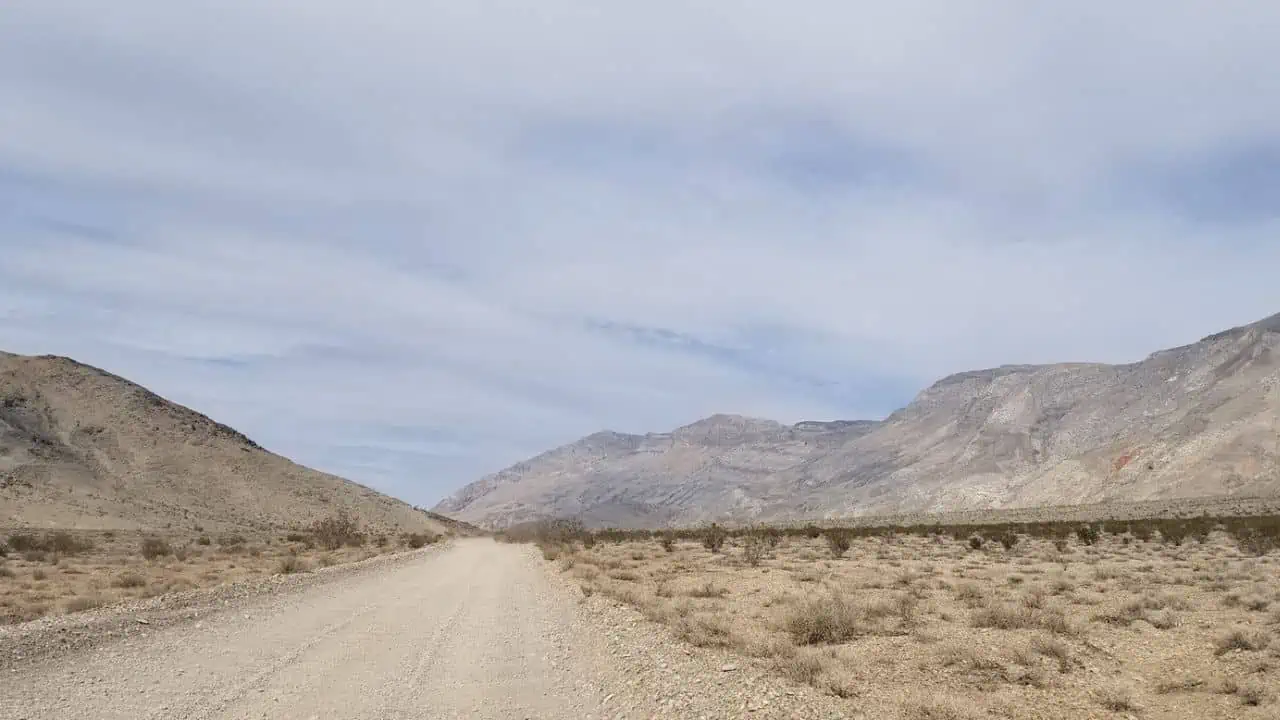
This dry lakebed is home to a unique phenomenon where rocks appear to move and leave behind long tracks in the dried mud.
The exact cause of this phenomenon has puzzled scientists for years, but it is believed to be caused by a combination of wind and ice.
Visitors can explore the playa and see the tracks firsthand, as well as take in the stunning views of the surrounding mountains and valleys.
The Racetrack Playa is not easily accessible and requires a high-clearance vehicle and a long drive on a rough dirt road, but it is a must-see destination for anyone interested in the mysteries of the natural world.
15. Visit the Death Valley Visitor Center
If you’re planning a trip to Death Valley National Park, be sure to visit the Death Valley Visitor Center.
This informative and educational center offers a wealth of resources for visitors, including maps, brochures, and exhibits about the park’s history and natural features.
You can speak with park rangers and staff to learn about the best hikes, drives, and activities in the park, as well as get tips for staying safe in the desert environment.
The center also offers educational programs and events for visitors of all ages, including guided hikes, astronomy talks, and cultural demonstrations. Be sure to stop by the gift shop to pick up souvenirs and mementos of your visit.
The Death Valley Visitor Center is easily accessible by car and is a must-visit destination for anyone planning a trip to Death Valley National Park.
Best time to Visit the Death Valley National Park
The best time to visit Death Valley National Park is in the fall, winter, or early spring (October to April). During this time, temperatures are cooler and more comfortable for outdoor activities, ranging from the 60s°F to 80s°F (15°C to 30°C) during the day and dropping to the 40s°F to 60s°F (5°C to 15°C) at night.
Summers in Death Valley are extremely hot, with temperatures often exceeding 100°F (38°C) and sometimes reaching up to 120°F (49°C), making outdoor activities challenging and potentially dangerous.
Additionally, springtime in the park offers a chance to see the blooming wildflowers, which can be a beautiful sight. Visitors should always check the park’s weather and road conditions before planning a trip.
Final Thoughts on Things to Do in Death Valley National Park
In conclusion, Death Valley National Park is truly a one-of-a-kind destination with a wide variety of activities and experiences to offer visitors. From scenic drives and hikes to stargazing and exploring historic sites, there are plenty of options for things to do in Death Valley National Park for everyone.
The park’s stunning natural features, like the Racetrack Playa and the Ubehebe Crater, are unique and awe-inspiring, and the park’s rich history can be explored at sites like Scotty’s Castle and the Harmony Borax Works.
Whether you’re an outdoor adventurer or a history buff, Death Valley National Park is sure to captivate and inspire you. So, add it to your itinerary and experience the wonder of this beautiful and fascinating national park for yourself.
FAQs on Things to Do in Death Valley National Park
What are some popular things to do in Death Valley National Park?
Some popular things to do in Death Valley National Park include visiting natural attractions such as Badwater Basin, Zabriskie Point, and Mesquite Flat Sand Dunes, as well as hiking, stargazing, and exploring historic sites like the Harmony Borax Works.
Are there any guided tours or activities available in the park?
Yes, there are guided tours and activities available in the park, such as ranger-led programs, guided hikes, and stargazing tours. Private tours are also available through authorized companies.
What are some must-see natural attractions in the park?
Some must-see natural attractions in the park include Badwater Basin, the lowest point in North America, Zabriskie Point, which offers stunning views of colorful rock formations, and Mesquite Flat Sand Dunes, which are ideal for hiking and photography.
Can I go hiking in Death Valley National Park?
Yes, there are numerous hiking trails throughout the park, ranging from easy nature walks to challenging backcountry treks. Some popular hikes include Golden Canyon, Mosaic Canyon, and Telescope Peak.
Are there any places to swim or cool off in the park?
Yes, there are a few places to swim or cool off in the park, such as the natural hot springs at Saline Valley and Tecopa, and the pool at Furnace Creek Ranch.
What is the best time of year to visit Death Valley National Park?
The best time to visit Death Valley National Park is in the fall, winter, or early spring when temperatures are cooler and more comfortable for outdoor activities.
Are there any camping or lodging options in the park?
Yes, there are several campgrounds and lodging options in the park, including Furnace Creek Campground, Stovepipe Wells Campground, and The Oasis at Death Valley.
What should I bring with me when visiting Death Valley National Park?
Visitors should bring plenty of water, sunscreen, a hat, sturdy hiking shoes, and a map of the park. It is also recommended to bring a first aid kit, extra food and water, and warm clothing for cooler evenings.

